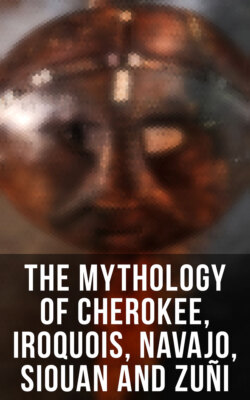Читать книгу The Mythology of Cherokee, Iroquois, Navajo, Siouan and Zuñi - James Mooney - Страница 59
На сайте Литреса книга снята с продажи.
Totemism
ОглавлениеIf inanimate objects and natural phenomena were endowed by savage imagination with the qualities of life and thought, the creatures of the animal world were placed upon a still higher level. The Indian, brought into contact with the denizens of the forest and prairie, conceived a high opinion of their qualities and instinctive abilities. He observed that they possessed greater cunning in forest-craft than himself, that their hunting instinct was much more sure, that they seldom suffered from lack of provisions, that they were more swift of foot. In short, he considered them to be his superiors in those faculties which he most coveted and admired. Various human attributes and characteristics became personified and even exaggerated in some of his neighbours of wood and plain. The fox was proverbial for craft, the wild cat for stealth, the bear for a wrong-headed stupidity, the owl for a cryptic wisdom, the deer for swiftness. In each of these attributes the several animals to whom they belonged appeared to the savage as more gifted than himself, and so deeply was he influenced by this seeming superiority that if he coveted a certain quality he would place himself under the protection of the animal or bird which symbolized it. Again, if a tribe or clan possessed any special characteristic, such as fierceness or cunning, it was usually called by its neighbours after the bird or beast which symbolized its character. A tribe would learn its nickname from captives taken in war; or it might even bestow such an appellation upon itself. After the lapse of a few generations the members of a tribe would regard the animal whose qualities they were supposed to possess as their direct ancestor, and would consider that all the members of his species were their blood-relations. This belief is known as totemism, and its adoption was the means of laying the foundation of a widespread system of tribal rule and custom, by which marriage and many of the affairs of life were and are wholly governed. Probably all European and Asiatic peoples have passed through this stage, and its remains are to be found deeply embedded in our present social system.
